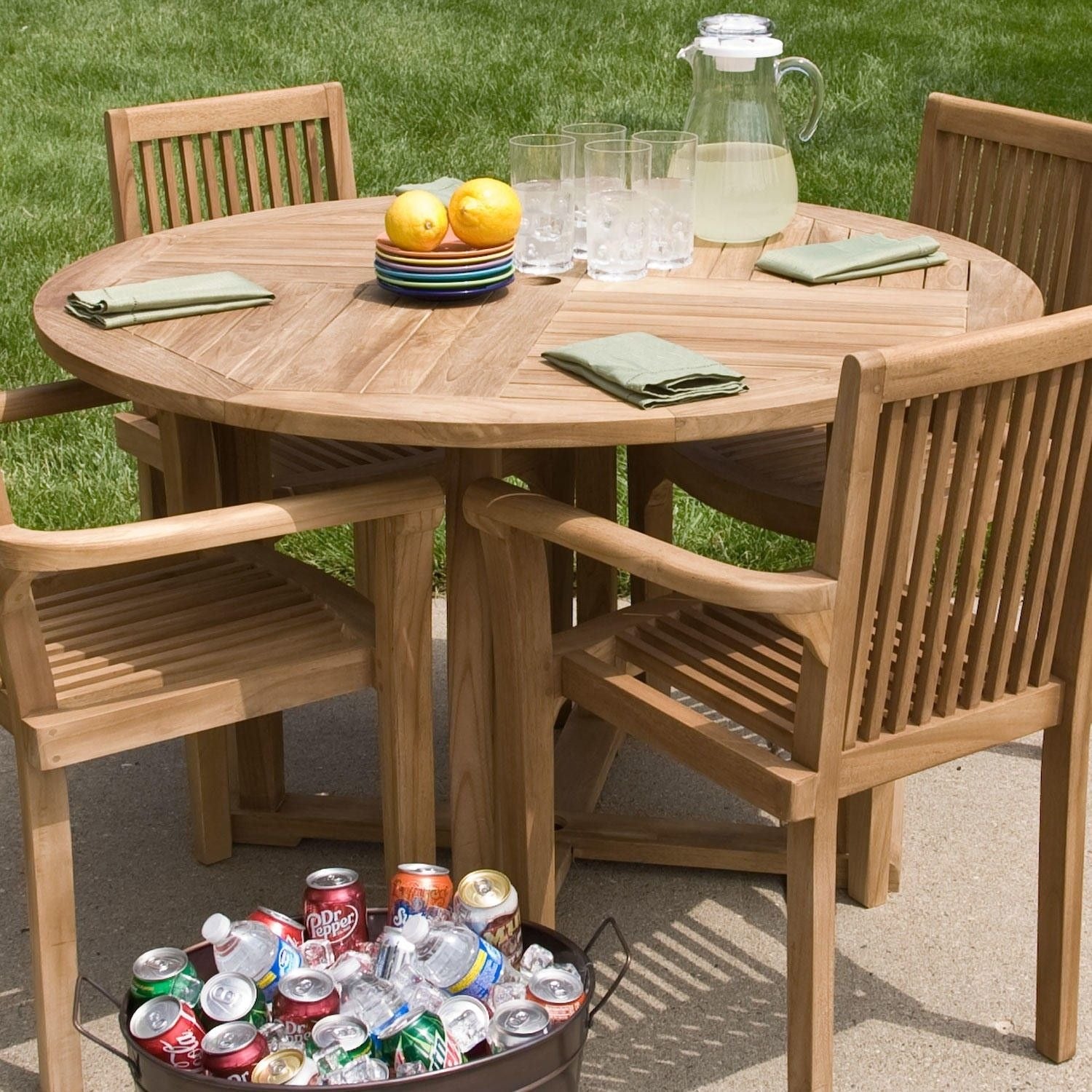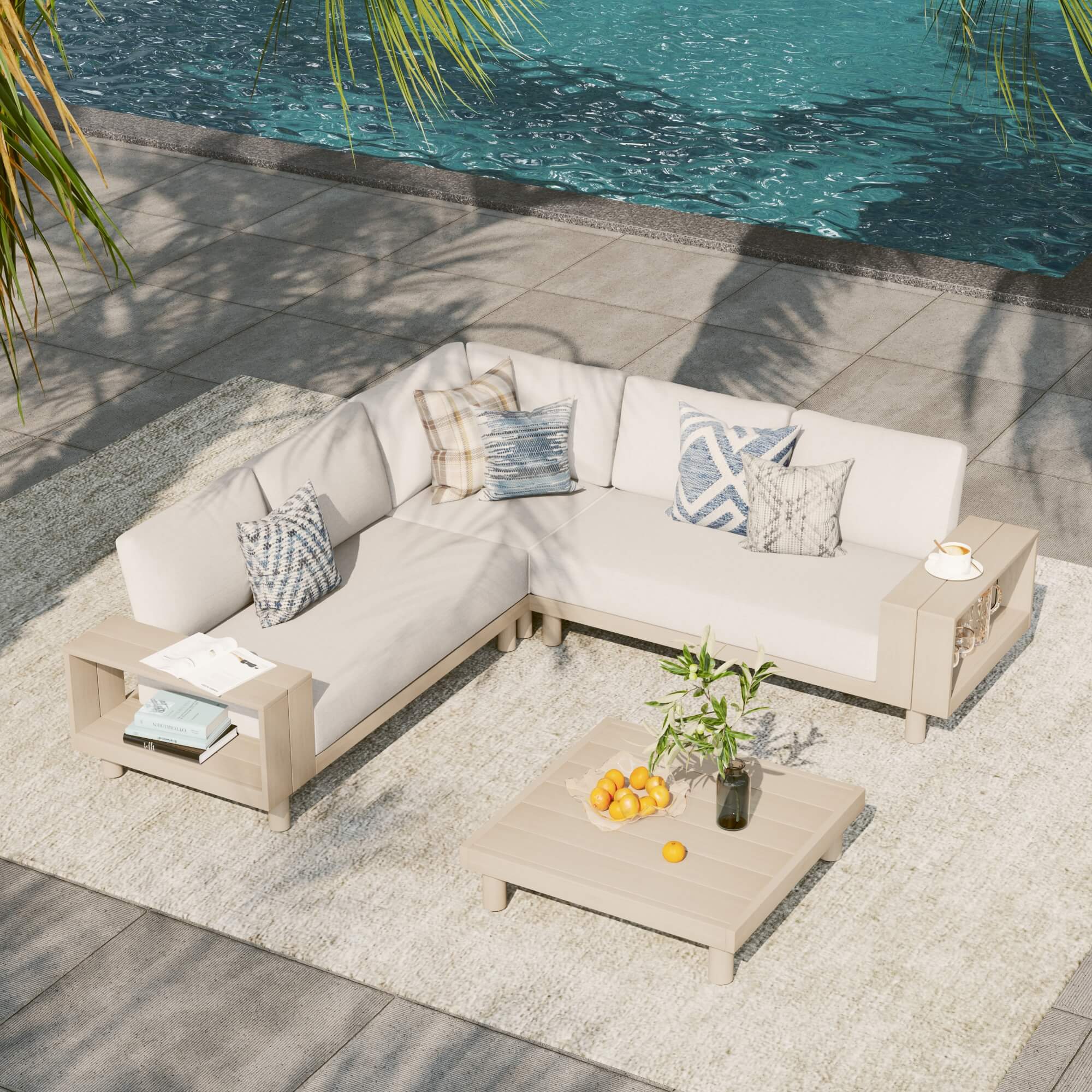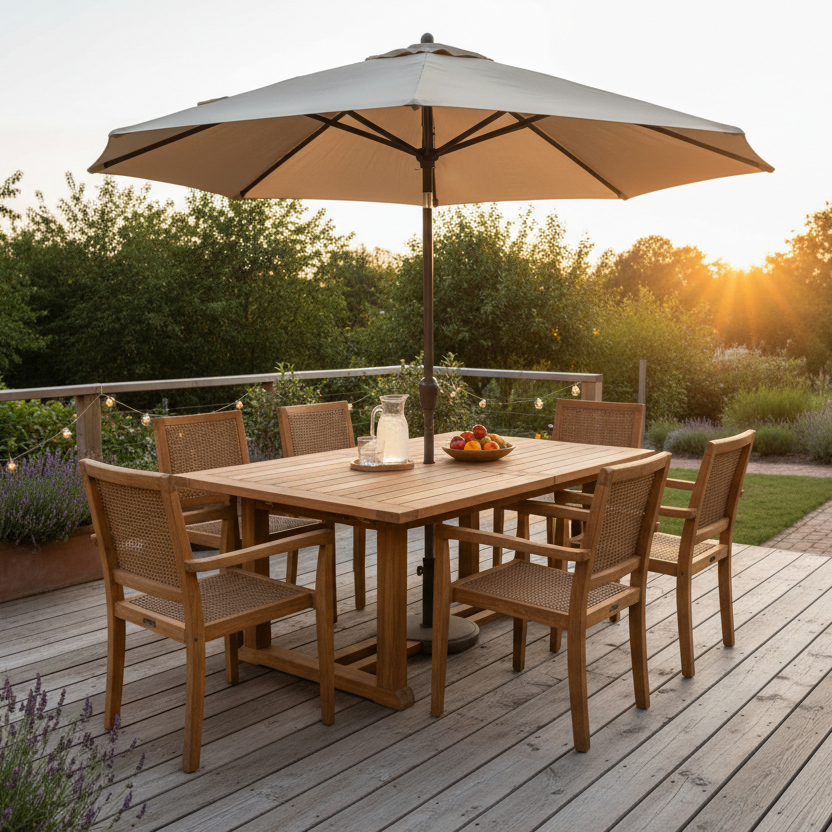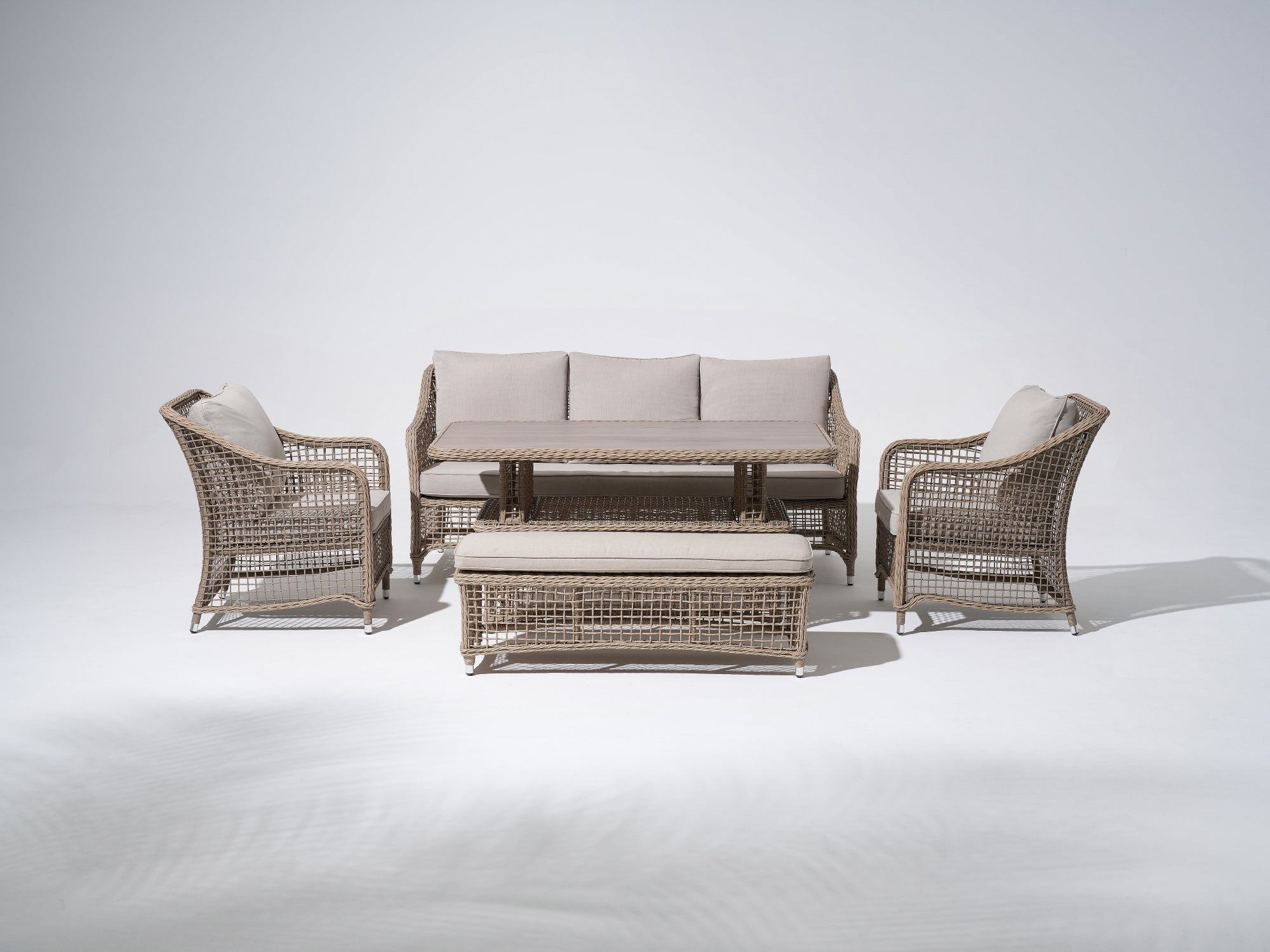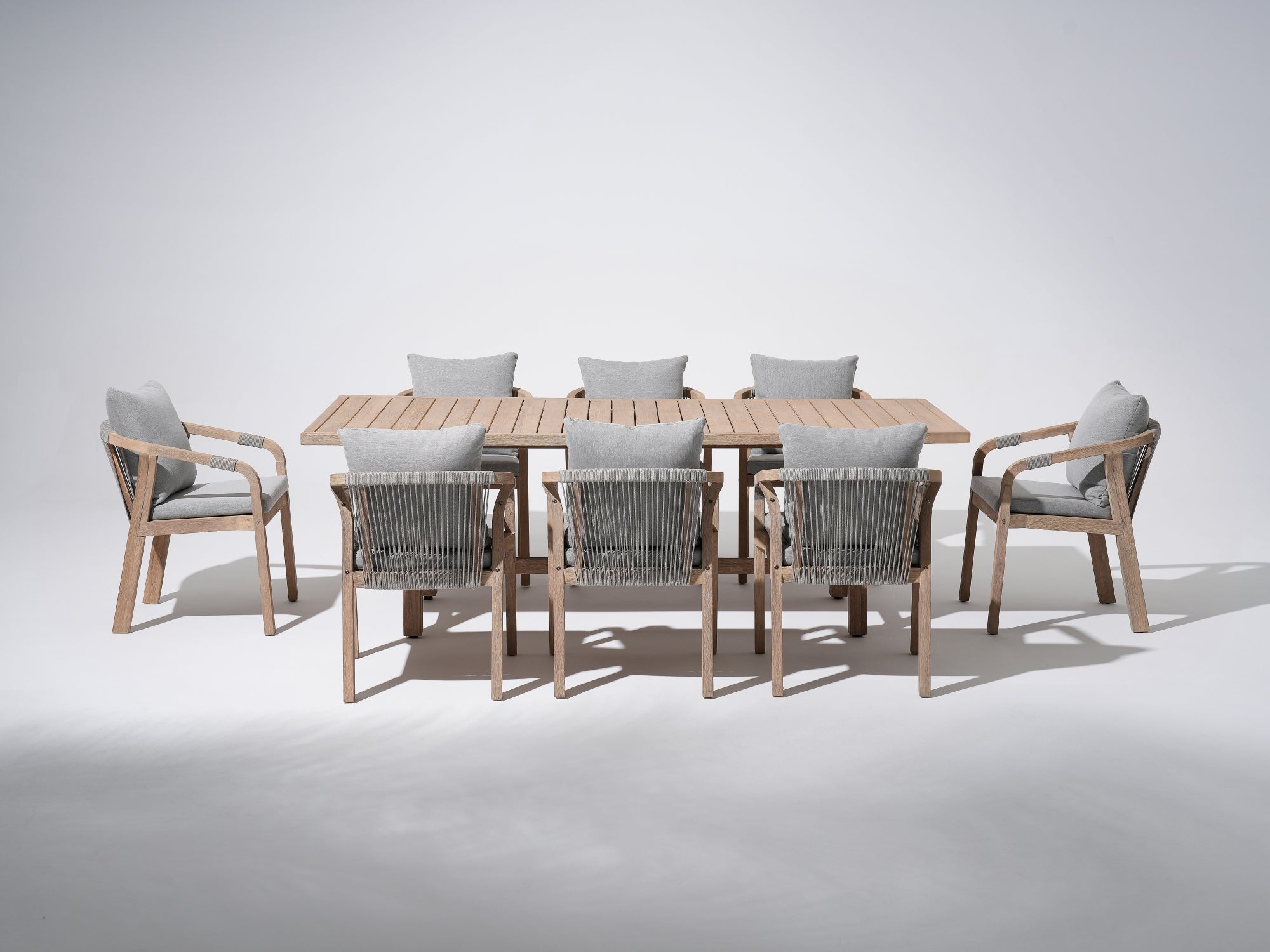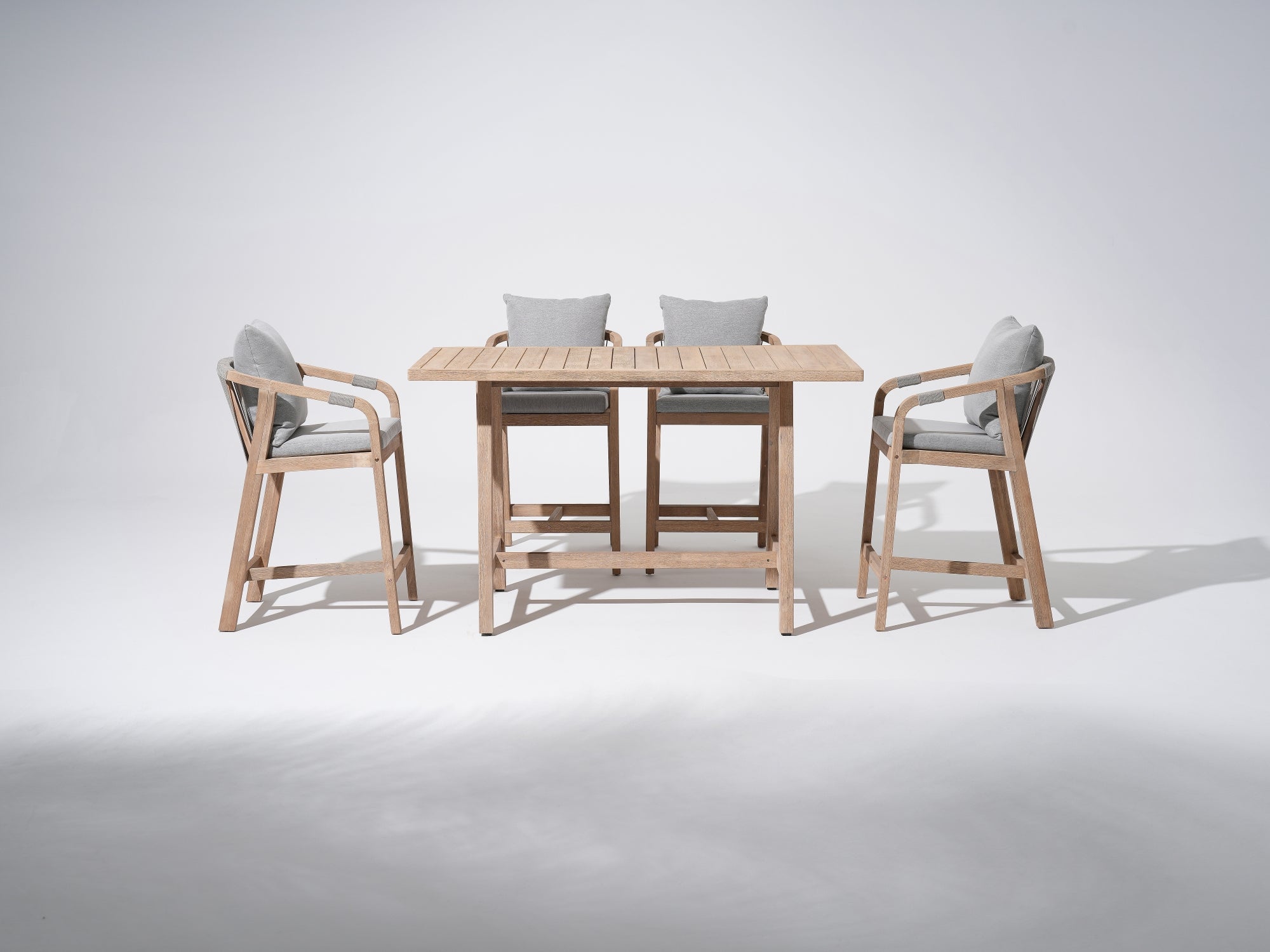Yes, eucalyptus wood is an excellent choice for outdoor furniture due to its natural properties and durability. Eucalyptus wood, a versatile hardwood from the eucalyptus tree, is renowned for its resilience and rapid growth. Native to Australia and found in Asia, Europe, and the Americas, eucalyptus trees can reach impressive heights over 300 feet, making them a reliable and sustainable source for outdoor furniture.

5 Reasons Why Eucalyptus Wood is Good For Outdoor Furniture
1. Weather Resistance
Eucalyptus wood is known for its natural weather resistance. It contains natural oils that help protect it from moisture, humidity, and fungal growth, making it suitable for outdoor use in various climates.
2. Durability
Eucalyptus wood is a dense hardwood, which makes it sturdy and durable. It can withstand the wear and tear of outdoor conditions, including exposure to sunlight, rain, and temperature fluctuations.
3. Insect Repellent
Eucalyptus wood contains oils that act as a natural insect repellent, helping to deter pests and insects that may damage the furniture.
4. Sustainability
Eucalyptus trees are fast-growing and renewable, making it a more sustainable choice compared to other hardwood options.
5. Appearance
Eucalyptus wood has a beautiful, warm, and natural look that complements outdoor settings. It can be left to age naturally, developing a silver-gray patina over time, or maintained with periodic oiling to retain its original color.

Common types of wood used for outdoor furniture include:
- Teak
- Oak
- Pine
- Ash
- Eucalyptus
- Mahogany
- Cedar
- Elm
The types of wood that are not suitable for outdoor furniture primarily include: (These woods may be prone to rotting, cracking, or warping when exposed to outdoor elements such as sunlight, rain, and humidity. )
- Cherry
- Maple
- Birch
- Alder
- Poplar
BUT When it comes to wooden outdoor furniture, one of the most popular choices among enthusiasts and designers alike is undoubtedly teak wood. Renowned for its remarkable durability, timeless beauty, and impressive weather resistance, teak wood has secured its place as a top preference for outdoor settings.

The Difference Between Eucalyptus Wood and Teak Wood
Eucalyptus Wood and Teak Wood are both popular choices for outdoor furniture, but they have some distinct differences:
1. Origin
Eucalyptus Wood: Eucalyptus wood comes from the eucalyptus tree, native to Australia and found in other regions worldwide.
Teak Wood: Teak wood is obtained from the teak tree, native to Southeast Asia, particularly countries like Indonesia, Myanmar, and Thailand.
2. Density and Hardness
Eucalyptus Wood: Eucalyptus wood is considered a hardwood, but its hardness and density can vary depending on the species. Generally, it is less dense and not as hard as teak wood.
Teak Wood: Teak wood is renowned for its exceptional hardness and density, making it one of the most durable and long-lasting hardwoods available.
3. Color and Appearance
Eucalyptus Wood: Eucalyptus wood can have a range of colors, from pale yellows and browns to darker reds and mahogany tones. Its appearance is attractive with natural figuring and patterns.
Teak Wood: Teak wood has a golden to dark brown color when freshly cut, and it ages gracefully to a silvery-gray patina when left untreated. Its appearance is highly prized for its elegant and classic look.
4. Weather Resistance
Eucalyptus Wood: Eucalyptus wood possesses natural weather-resistant properties, thanks to its oils, but it may require regular maintenance to sustain its durability under harsh outdoor conditions.
Teak Wood: Teak wood is exceptionally weather-resistant and highly resistant to rot, decay, and insects, making it a preferred choice for outdoor furniture without requiring as much maintenance as eucalyptus.
5. Sustainability
Eucalyptus Wood: Eucalyptus trees are fast-growing and considered more sustainable compared to slower-growing hardwoods. However, sustainability may vary depending on the sourcing practices.
Teak Wood: Teak trees are slow-growing, and as such, there are concerns about the sustainability of teak harvesting from natural forests. However, responsibly sourced teak from well-managed plantations can be a more sustainable option.
6. Cost
Eucalyptus Wood: Eucalyptus wood is generally more affordable than teak wood, making it a budget-friendly option for outdoor furniture.
Teak Wood: Teak wood is considered a premium hardwood, and its high demand and limited supply contribute to its higher cost.
Both Eucalyptus Wood and Teak Wood are suitable choices for outdoor furniture, but teak wood stands out for its exceptional durability, natural weather resistance, and elegant appearance. Eucalyptus wood is a more budget-friendly option with good weather resistance, but it may require more regular maintenance to keep it in top condition.
Therefore, when selecting wooden furniture, it is crucial to examine its material closely. Some vendors may attempt to sell Eucalyptus Wood furniture at teak wood prices, so consumers need to discern with care.

9 Essential Tips for Proper Care
However, like any outdoor furniture material, eucalyptus wood requires regular maintenance to prolong its lifespan. Here are some essential tips for proper care:
1. Regular Cleaning
Clean the furniture regularly to remove dirt, dust, and debris. Use a soft brush or cloth along with mild soap and water to gently scrub the surfaces. Avoid using harsh chemicals or abrasive cleaners as they can damage the wood.
2. Avoid Standing Water
Prevent standing water from accumulating on the furniture, as prolonged exposure to moisture can lead to mold, mildew, and wood damage. Use a towel or sponge to wipe off any water after rain or cleaning.
3. Protect from Harsh Elements
If possible, position the furniture in a shaded area or use a protective cover during extreme weather conditions such as heavy rain, snow, or prolonged exposure to direct sunlight.
4. Apply Protective Finish
Consider applying a protective finish or outdoor furniture oil specifically designed for eucalyptus wood. This can help enhance the wood's natural weather resistance and prevent it from drying out or fading.
5. Regular Maintenance
Depending on the weather conditions and exposure, you may need to reapply the protective finish or oil every few months or as recommended by the manufacturer.
6. Inspect and Repair
Periodically inspect the furniture for any signs of damage or wear. Address any loose screws, joints, or splintered areas promptly to prevent further issues.
7. Lifting Furniture
When moving the furniture, lift it instead of dragging it across the surface to avoid scratches and damage.
8. Avoid Sharp Objects
Be cautious about placing sharp objects directly on the wood, as they can cause scratches or indentations.
9. Seasonal Storage
If you live in an area with harsh winters, consider storing the furniture indoors or in a dry, well-ventilated area during the off-season.
Conclusion
Overall, eucalyptus wood is a solid choice for outdoor furniture due to its durability, weather resistance, and appealing appearance, making it a popular option for those seeking a natural and sustainable material for their outdoor living spaces.


